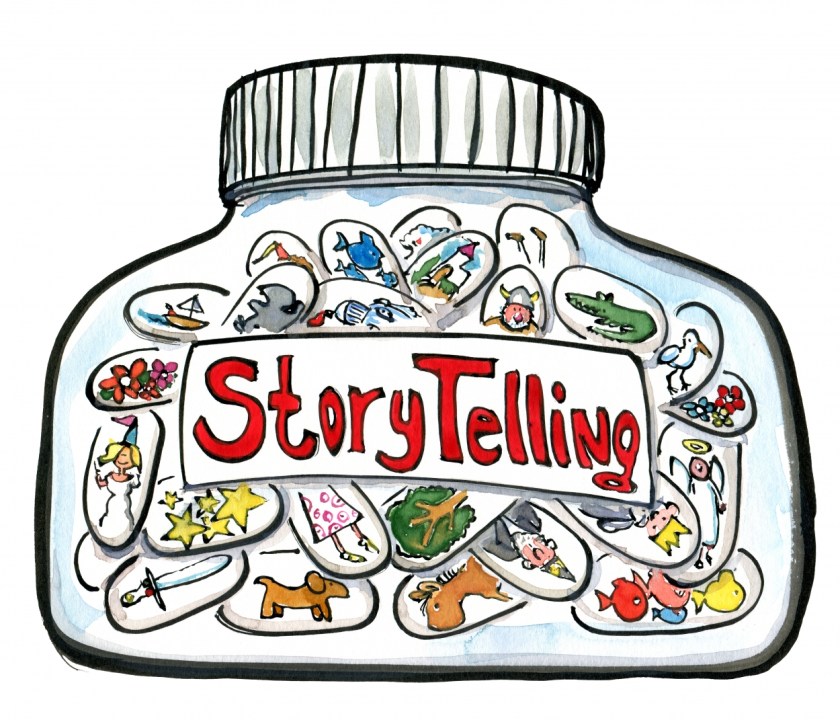
You Must Have a Hook In Your Opening
You need to draw the audience into your story. Your hook could be the costume that you wear, the song you sing as you start the session. It could be a question that you ask the audience.
It could be a ‘call- and -reponse’: I say,”Crick!” the audience says: “Crack!” Repeat 2/3 times and go straight into your story.
Maintain Eye Contact
Eye contact is one of the most important non-verbal ways to connect with other people. It keeps an audience’s attention and gives a sense of confidence. If you are looking into a camera- look directly at the camera.
Use Props
Almost any story can benefit from props, no matter what subject you are teaching. Don’t introduce the props all at once, but bring them out one by one during parts in the telling.
Know your story well –
Even if you are reading your story, know it well. This will help you not to have to look down at the book all the time, while reading. Use your imagination and see yourself inside the story.
If you are telling the story, use all your senses and imagine what you see, hear, feel, touch and smell. Use words to allow them to experience the story.
Change the Pace of the Story:
Use Dramatic Pauses
When we are nervous, we tend to talk more quickly. Practice telling or reading your story slowly. Stop at crucial moments in the story to create tension and drama.
Popular television shows use dramatic pauses (or cliffhangers) to rope the audience back into the story. When it seems that the problem is unsolvable, it is the right moment to pause, giving your audience a chance to think up the solution themselves. You can even ask them what a character could do.
If you are filming the story, you won’t have the feedback an audience can give, but you can still use pauses to great effect.
Change the Tone of your Story: How?
* Change Your Voice With Different Characters
It helps to make characters more interesting when you give them personalities. Part of that includes changing your voice with each character. Your voice is the best prop that you can use to bring the character to life. Combining voice and body movement will also bring the character to life.
Change how loud and soft you speak: go low and soft on tense moments, high and excited on happy moments.
* Breathe-
when we are nervous, we don’t breathe properly and our breath is shallow. Try to breathe deeply a few times before you start. This will calm you and give you more oxygen. Stand or sit up straight so that you can speak clearly and breathe properly.
* Articulate
When you speak, open your mouth and use your lips and tongue to pronounce the words clearly. Tongue-Twisters are great ways to practice articulation: Try these. Say them over and over and faster and faster without getting mixed up.
Susie sells shells on the seashore.
Red lorry, yellow lorry
Black bugs bleed black blood.
Peter Piper picked a peck of pickled peppers.
Use Language That your audience will understand.
Decide who your audience will be. If it is children, then your language needs to be colourful and descriptive. It should have action and preferably chants or sayings that they can repeat.
Your language creates pictures in the minds of your audience.
Use Movement
Movement can be used in different ways. As the storyteller, you can paint pictures with your body- using your hands, feet, legs, and head. You can also ask the audience to copy movements. This will keep them engaged in the story.

Finish Well.
Make sure that your story finishes strongly. The end is the last thing the audience will remember. After the last sentence, wait a bit, count to 2: ‘ one and two’ and then relax.
Most of all-
Enjoy!
Published: Oct 18, 2021
Latest Revision: Oct 18, 2021
Ourboox Unique Identifier: OB-1212965
Copyright © 2021








